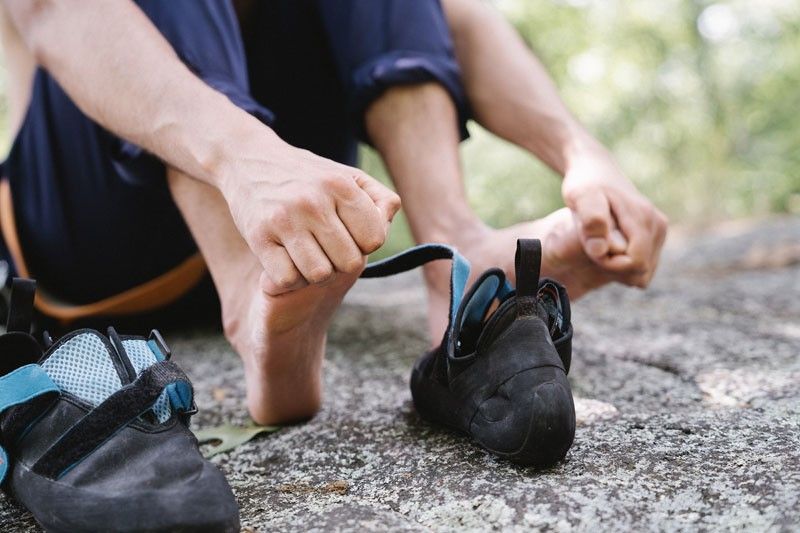Close to half of Pinoy diabetics suffer from nerve damage

To further promote Neuropathy Awareness Week, P&G Health organized a virtual conference involving 6,000 healthcare professionals in eight countries including the Philippines. The “Demystifying Neuropathy Forum” featured several experts and their insights on the latest research findings on peripheral neuropathy.
While predominant in diabetics, the condition is not only seen in senior adults but also in children, as well as some post-COVID cases. The discussion focused more on diabetics, though, because of the staggering numbers.
In 2021, it was announced by IDF Diabetes Atlas that 537 million adults worldwide are diabetic. By 2045, that number is predicted to jump to 800 million. Close to half of diabetics are expected to develop nerve damage and half of them will progress to a painful condition.
“Peripheral neuropathy (PN) is a chronic clinical condition, wherein the peripheral nervous system is damaged. Symptoms of peripheral neuropathy include numbness, tingling, prickling, and burning sensations in the hands and feet. Sufferers of PN report impacts on their quality of life including reduced physical abilities and poor sleep. Besides diabetes, mellitus, obesity, alcohol misuse, and B vitamin deficiencies are other high-risk factors leading to peripheral nerve damage,” said P&G Health.
“One in 10 people and one in two diabetics are suffering from peripheral neuropathy. Yet, many are unaware that early diagnoses can enable successful treatment outcomes, and damaged nerves can be regenerated if nerve damage has not progressed too far. . A leader in Nerve Health, P&G Health has been committed to enabling improved treatment outcomes, and enhanced quality of life for consumers since 1962,” Aalok Agrawal, P&G Health senior vice president for Asia, India, Middle East and Africa, emphasized.
“Now, 80 percent of these patients remain undiagnosed and are suffering in silence even when symptoms are painful. They do not report symptoms, as they are not aware that these could be serious, or that these could be treated,” Aalok shared. “And most importantly, damaged nerves can be regenerated if nerve care damage has not progressed too far, and hence early treatment isabsolutely critical. Our flagship brand Neurobion is the world’s number one B-complex, which is trusted by doctors and patients all over the world for nerve care.”
As one of the thousands in attendance, I was fortunate enough to be chosen to ask one question: “Since you said that many remain undiagnosed, what are the most important red flags that the general public should be aware of to alert themselves to go see a doctor?”
“The awareness of the common symptoms of neuropathy needs to be increased, and the common symptoms are tingling and numbness or reduction in sensations, usually in the feet and sometimes in the hands. So this awareness that these symptoms mean peripheral neuropathy is quite important,” replied Prof. Satish Khadilkar. A renowned urologist, Satish is the head of the Department of Neurology at Bombay Hospital Institute of Medical Sciences in Mumbai, India. His sub-specialty is neuromuscular disorders.
“First of all, the general public should understand what nerves are. Nerves are not only the brain or mental health or something. Nerves control everything we do. When I move my hand or I touch something, there are nerves in my body that I need. That’s the first step — understand their peripheral nerves — because peripheral neuropathy is a difficult term,” explained Inna Eiberger, global medical director for nerve care, P&G Health.

What does that mean?
“Understand that nerves are important, not just for the brain, but for the body to walk, to digest, to have a heartbeat. And then understand the risk factors. And then, I think, you know, intuitively, people will understand that it is important to watch out for the symptoms, understanding the importance of nerve health in the body is the first step, in my opinion,” she added.
“Peripheral neuropathy is caused by, first of all, nervous system damage, and this is due to multiple reasons. We have a lot of alcohol misuse, abuse in this world. Inflammatory diseases, infections everywhere in the world, we have nutrition deficiencies, we have B vitamins deficiencies. But it is important that by far the most prevalent cause, worldwide, for neuropathy is diabetes because we know that 60 to 70 percent of diabetics have mild to even severe forms of nerve problems. And this is what we call diabetic polyneuropathy,” Prof. Rainer Freynhagen clarified.
A specialist in anesthesia, intensive care, pain management, palliative care and sports management, Freynhagen heads the Department for Anesthesiology, Critical Care Medicine, and Pain Medicine at Benedictus Hospitals Tutzing, Feldafing in Germany.
“Nerve damage here in this country (India) is estimated up to 45 percent, and this is attributed to different types of diabetes, type 1, type 2. The Philippine studies reported a prevalence of more than 40 percent, 42 percent approximately for diabetic neuropathy, and in Indonesia, it’s 54 percent diabetics. Malaysia — and I just got back from Malaysia KL last week — is a brutal number. Fifty-one percent of diabetics were diagnosed with peripheral neuropathy. And if we look at the whole of Southeast Asia, diabetic polyneuropathy is seen in a very, very high proportion of diabetic patients. And in some countries, it sums up to almost 60 percent; UAE, 35 percent. We know Saudi Arabia, even more than 60 percent; you can see here approximately 65 percent diabetics in Saudi Arabia. Singapore, 33 percent. So these numbers are extremely high already; the problem is they are rising. Diabetes is exploding,” Rainer warned.
And what are the symptoms?
“Symptoms can be multiple, but first of all, we see patients typically with numbness, tingling, burning. They have this feeling of pins and needles in their feet and in their hands, crawling ends. They say ‘electricity in my hands.’ And this is extremely problematic for them. The problem is, patients are often not aware of these symptoms, or they do not associate these symptoms specifically to their nerves, or some of them simply ignore these symptoms,” he explained.
One out of two patients with diabetic polyneuropathy will progress to a painful kind of polyneuropathy, the painful diabetic polyneuropathy.
“And this pain, this neuropathic pain, is very frequently associated with symptoms which we call comorbidities such as depression, anxiety, sleep disturbances, and hence this all leads at the end of the day in these suffering patients to an extremely poor quality of life; and this is not only touching the social aspects of life,” he added. “This is touching on working aspects, sexual aspects, general activity, mood, whatever you want. This is really a challenge for these patients. So the main reason that diabetic polyneuropathy is very, very often missed, or even underdiagnosed in clinical practice is the lack of awareness. And that’s exactly why we’re here today.”
It is even estimated that, of the expected 9.7 billion individuals living in 2050, one-third of these will have diabetes. Half of those will have peripheral neuropathy and half of those with peripheral neuropathy will end up suffering from neuropathic pain.
“And that’s what leads me to the end. We’re not talking about simple numbers here, but we’re talking about more than 800 million human beings suffering from painful diabetic polyneuropathy in 2050. And that’s very, very close. It’s not far away. So that’s why we’re here together, and that’s why we have to act. Now,” Prof Rainer concluded.
* * *
Post me a note at mylenedayrit@gmail.com.



















